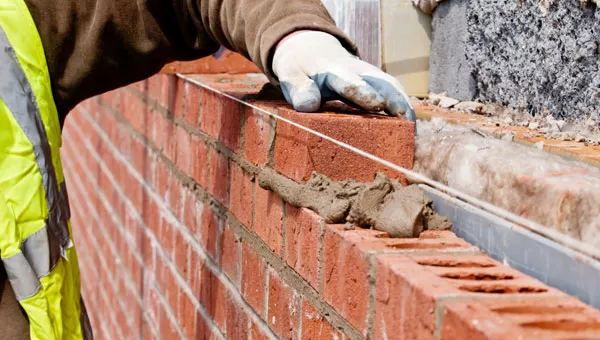Opening the Tricks of Sustainable Stonework Building Practices for Eco-Friendly Structures
Among the myriad strategies to green building, sustainable masonry construction stands out as a reliable and long lasting approach that holds a wide range of untapped capacity. From the choice of materials to innovative construction techniques, the secrets to accomplishing sustainability within masonry building are complex and intriguing.
Benefits of Sustainable Masonry Building And Construction
Embracing sustainable masonry building and construction practices not only decreases ecological impact yet likewise supplies long-term economic advantages to contractors and neighborhoods. By making use of products like recycled bricks, blocks, and rocks, builders can substantially decrease the carbon impact of their tasks while promoting resource efficiency. Furthermore, lasting stonework building and construction techniques, such as proper insulation and thermal mass residential or commercial properties, can boost energy effectiveness within structures, bring about minimized functional costs in time.
Furthermore, the resilience and durability of masonry structures add to long-lasting financial advantages. Buildings created making use of lasting masonry practices typically need less maintenance and repair work, equating to cost savings for contractors and homeowner. The durability of masonry products likewise guarantees that frameworks continue to be steady and safe, decreasing the demand for constant improvements or substitutes.
Eco-Friendly Stonework Products
Making use of environmentally friendly stonework products is an essential step towards boosting the sustainability of building and construction techniques and reducing environmental effect while maximizing lasting financial benefits. Lasting stonework products are sourced, generated, and utilized in a way that reduces total environmental effect. Lasting concrete blocks integrate recycled accumulations and may include improved insulation residential properties, contributing to energy efficiency in buildings.
Moreover, natural products like adobe, rammed planet, and straw bundles offer superb thermal mass residential properties, reducing the requirement for heating and cooling power. These products are usually locally readily available, promoting regional economic climates and minimizing transportation-related carbon emissions. By selecting green stonework products, building jobs can substantially minimize their environmental impact and add to the development of healthier, a lot more lasting constructed settings.
Energy-Efficient Stonework Techniques
Energy efficiency plays an essential duty in improving the sustainability of masonry building and construction practices. One essential energy-efficient stonework method is the usage of thermal mass, which involves incorporating thick materials like concrete or block into the building's framework to absorb and keep warm.

Technologies in Sustainable Stonework
Current innovations in sustainable stonework methods have actually caused cutting-edge methods that are improving the building and construction market. One such technology is the development of self-healing concrete, which utilizes germs embedded within the concrete to heal splits autonomously. This innovation not just minimizes upkeep costs however likewise enhances the toughness of masonry frameworks, adding to their sustainability.
One more notable advancement is making use of recycled aggregates in stonework construction - masonry contractor. By integrating materials such as crushed ceramic waste or recycled glass right into concrete blends, builders can lower the from this source ecological effect of construction tasks while maintaining architectural stability. This technique not just diverts waste from land fills however also conserves natural resources, making it a vital improvement in sustainable masonry construction
In addition, the combination of digital layout devices, such as Structure Info Modeling (BIM), is revolutionizing the method stonework structures are planned and created. BIM permits for more specific calculations, lowered material waste, and improved energy performance, ultimately bring about even more sustainable structure review practices. These developments jointly indicate an encouraging future for lasting stonework building in the age of eco-friendly buildings.
Future Trends in Masonry Sustainability
With the ingenious strides made in sustainable stonework methods, the future fads in stonework sustainability are positioned to further reinvent the building industry. Among the vital trends shaping the future of masonry sustainability is the increased combination of modern technology. Improvements such as Building Details Modeling (BIM) and digital reality simulations are being used to maximize masonry construction processes, bring about reduced product waste and enhanced power performance in buildings.
Furthermore, the development of novel sustainable products is set to play a considerable duty in boosting the eco-friendliness of stonework construction. masonry contractor. Developments like self-healing concrete, recycled accumulations, and bio-based binders are gaining traction for their ability to reduce ecological influence you can find out more while keeping architectural stability

Conclusion
In verdict, sustainable masonry building and construction techniques supply countless benefits for environmentally friendly structures. By using environment-friendly materials and energy-efficient strategies, masonry can contribute to an extra sustainable constructed atmosphere. Developments in sustainable masonry are constantly being developed to additionally enhance the environmental efficiency of buildings. Looking in the direction of the future, the trend of stonework sustainability is anticipated to expand, resulting in even more ecologically friendly and energy-efficient building and construction techniques in the years to find.